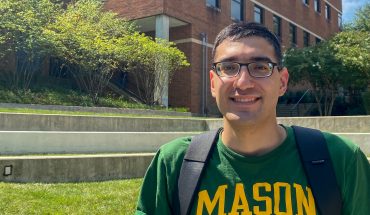Illustration by Laura Baker
Undergraduate students can apply to be a teacher assistant in classes they have already taken.
The Undergraduate Teacher Assistant position is an hourly wages job that can work around a student’s school schedule. They can work as little as 2 hours per week or as many as 15-20 helping out faculty members. The hours are flexible because many of the UTA’s duties can be done at home.
“I have felt for a long time that our UTA program is kind of a win, win, win program,” Term Associate Professor Tamara Maddox, who is the central coordinator of UTAs for the computer science classes, said. “We’ve got a way to support some of our really outstanding computer science students.”
Applicants do not have to be computer science majors to apply to be a UTA.
“We are willing to accept an application from someone outside the major as long as they have taken the appropriate classes so they can help with those classes,” Maddox said.
UTAs give students the one on one attention they need, giving the UTA a chance to get acquainted to how the students are doing. The undergraduate assistants also help with the same labs every week so that they can get comfortable with the class and get used to how that class is running.
The lab classes are usually run by a graduate teacher assistant (GTA) and the UTA gets to help with assisting other students. The GTA acts as the UTA’s supervisor.
UTAs can also assist the faculty member directly.
“Sometimes faculty members would like an undergraduate to actually code up a project,” Maddox said. “One of the nice things about having an undergraduate on board is, you can kind of test out the assignment before you give it to the students.”
Junior and computer science major Anson Rutherford is TAing for his second semester. He is assisting in the same class as he did last semester, CS 112, the basic programing class.
“I usually work with the GTAs,” Rutherford said. “We sit in on a lot of labs. Either we will sit in the back and have people bring questions to us or we will help the students with their project.”
Computer science majors use Piazza, an online message board similar to blackboard, to ask questions while doing their homework.
“Students post a lot of questions on there and we are assigned seven or eight hour chunks to check in regularly and answer questions,” Rutherford said. “So I usually check in once every two hours. You do that twice a week typically.”
UTAs come in handy for when students need help at odd hours during the week and weekends.
“I usually go person to person to help them individually with their problems and lab assignments,” junior and computer science major, Bryan Hoyle said.
Hoyle is also TA-ing for his second time. The first semester he was a TA he assisted in 211, which is introduction to object-oriented programming, and now is TA-ing for CS 262, introduction to low-level programming.
“I feel like I’m more updated in what’s going on in the CS department and have a better relationship with my professor,” Rutherford said about his experience.
Both Rutherford and Hoyle would like to pursue teaching in the future. “Teaching is one of the best ways to learn I find. I’m learning a lot more about what I’m teaching by teaching it,” Rutherford said.
Rutherford and Hoyle gave advice for future TA applicants. “Get to know who is teaching you right now,” Rutherford said. “It is very important to have an ‘in’ with a professor.”
“Make sure you completely understand every bit of the subject matter in the class you are TAing for,” Hoyle said.
Being a UTA is a great way to support faculty members and the bridge to giving more feedback to the students.
“Some students have told me that they feel more comfortable going and asking questions to their peers,” Maddox said. Going up to the UTA is less scary because students know they were in their shoes a couple of semesters ago and will still get a valid answer.
When selected as a UTA, it is a high recognition of excellence in your field.
When students are assisting in teaching a class, they are learning valuable skills to help them in the future with any kind of job. “In our connective world, communication is becoming more and more important,” Maddox said. “Sometimes it isn’t enough to be good at something, you also need to know how to communicate it to others.”
UTAs are getting the practice they need to communicate their knowledge and ideas by talking to the students and responding online to their questions. UTAs are also reinforcing what they know and keep that knowledge fresh in their minds by using it every day.
“I like being able to involve undergraduates because they are a wonderful resource, they have been through our classes,” Maddox said, “Graduate students may have more overall knowledge but the students who have just been through our classes, they really have an immediate feel for what it is like to be a student in that class.”
To apply to be a computer science UTA, the applicant must complete the Undergraduate Teaching Assistant Application Forum.
“Part of my forum is that I ask them, ‘is there a faculty member that you would especially like to work with?’ and I do my best to match them up,” Maddox said. “So that they can have an opportunity to develop that relationship further.”
The student-teacher relationship with a professor that an undergraduate really clicks with can be useful in the long run, even after college for letters of recommendation or networking.
“It’s a way to encourage and support undergraduates who have done outstanding work,” Maddox said.



